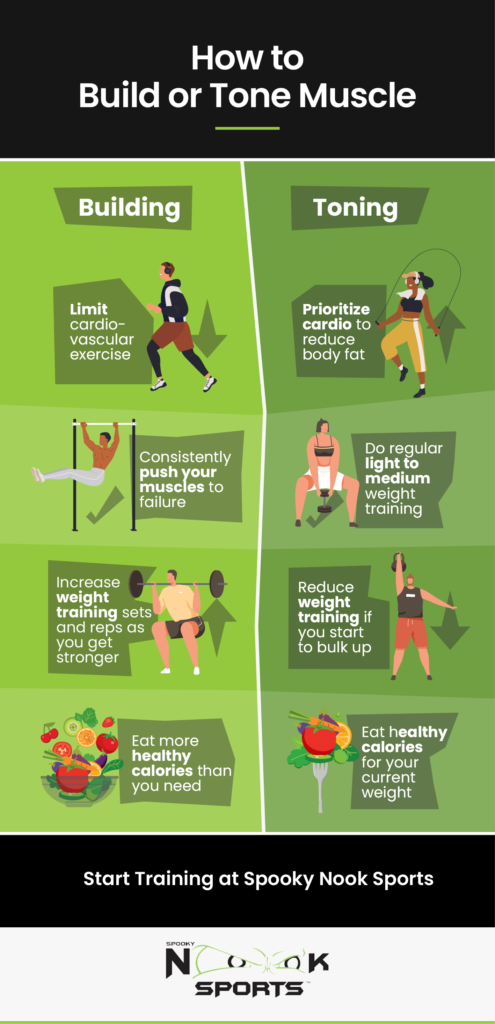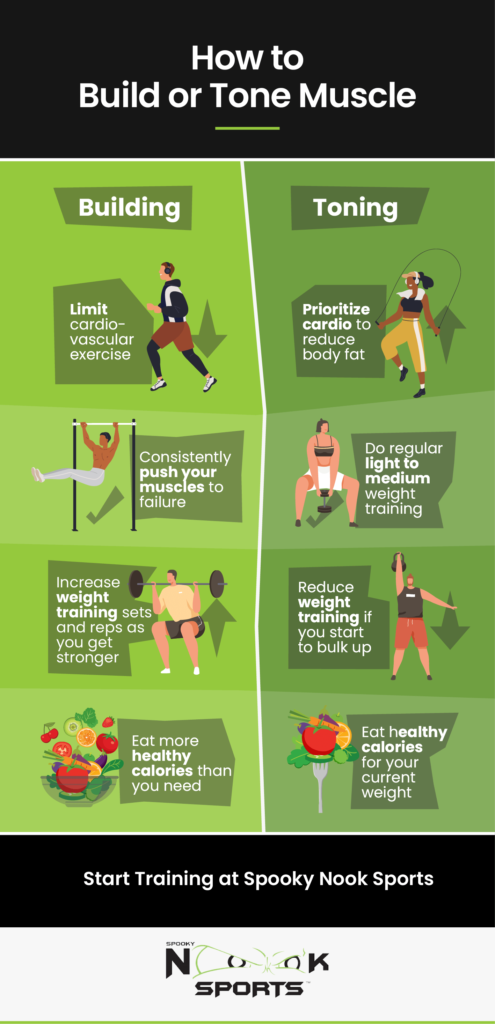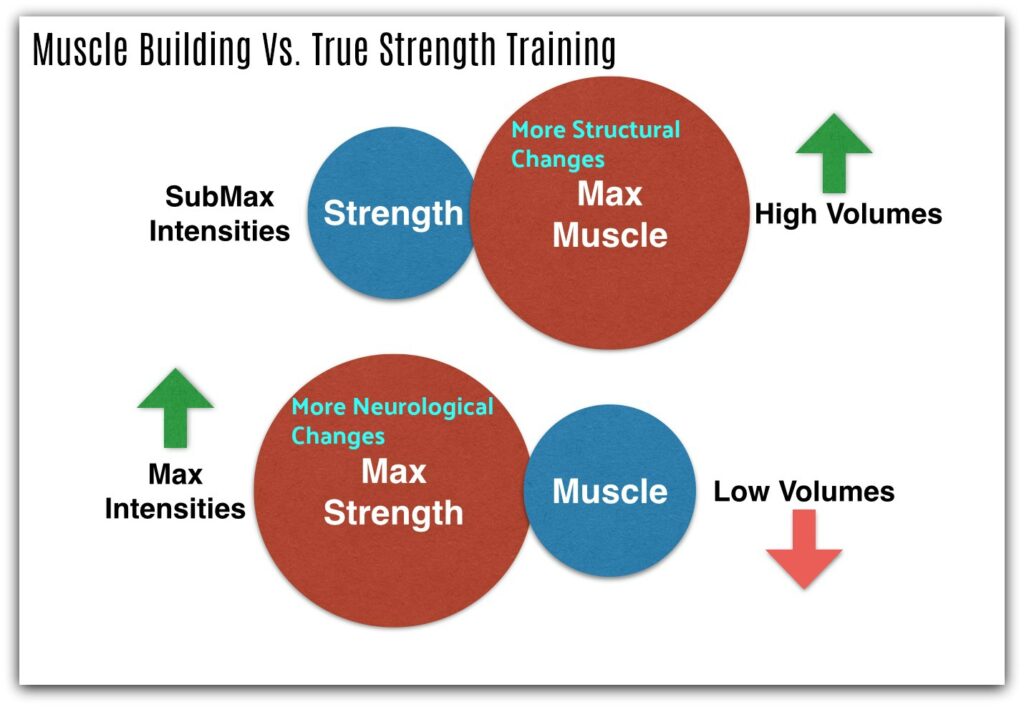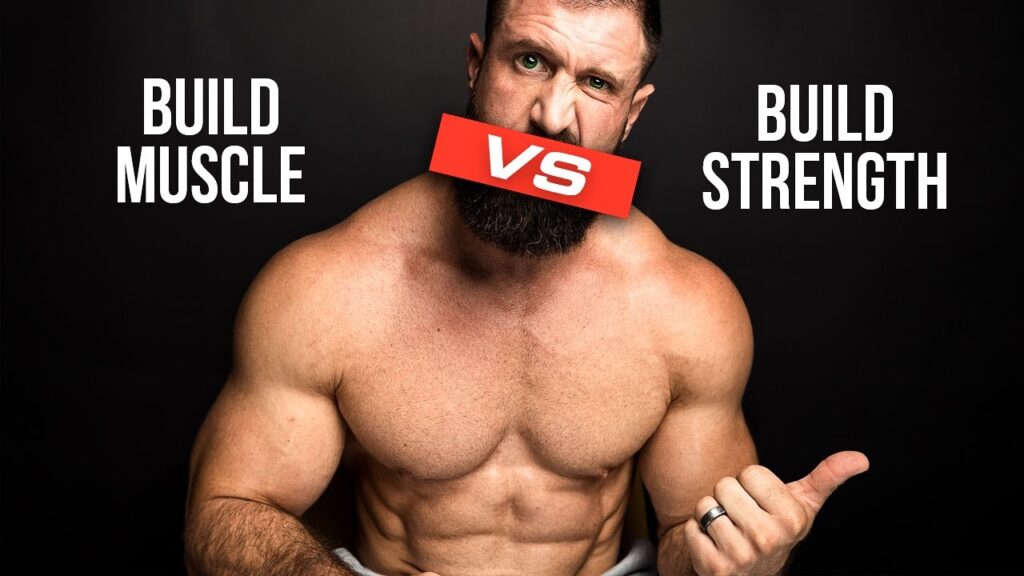Muscle mass refers to the size and amount of muscle tissue in the body. Toning focuses on muscle definition and firming without significantly increasing muscle size.
Building muscle mass involves heavy weightlifting and high-calorie diets to increase muscle size. Toning, on the other hand, aims for a leaner appearance through lighter weights and higher repetitions. Both processes require consistent exercise and a balanced diet, but their goals differ.
Increasing muscle mass enhances strength and bulk, while toning improves muscle definition and endurance. Understanding these differences helps tailor fitness routines to specific goals, whether aiming for bulk or a sculpted, defined look. This knowledge is crucial for effective workout planning and achieving desired body aesthetics.
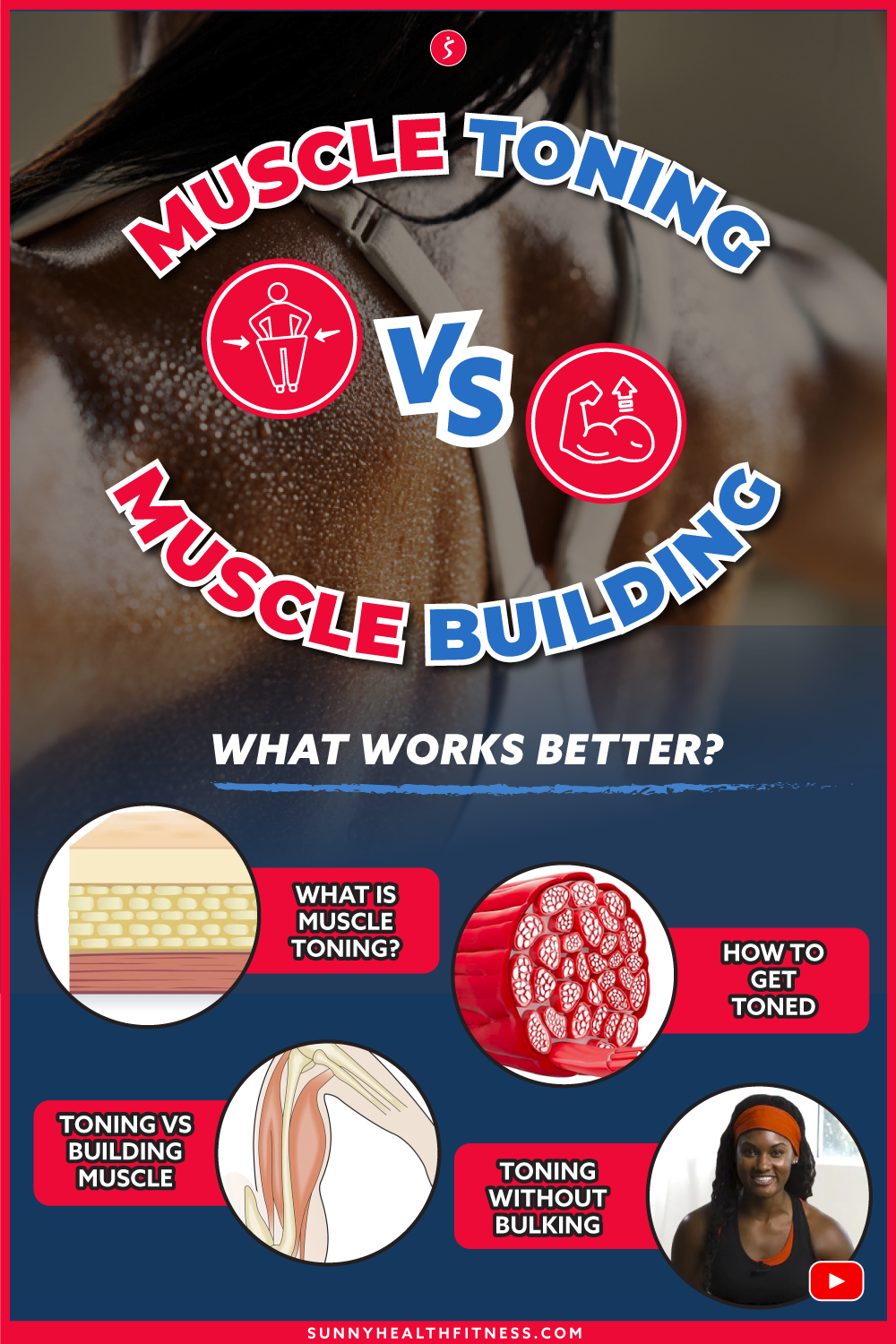
Credit: sunnyhealthfitness.com
Muscle Mass Basics
Muscle mass is the amount of muscle in your body. It includes skeletal muscles, smooth muscles, and water in muscles. Muscle mass makes you look strong and fit. It helps you perform daily tasks better.
Having more muscle mass helps burn more calories. It boosts your metabolism. Muscle mass also supports joint health. It reduces the risk of injuries. Strong muscles improve your balance and posture. You feel more energetic and active.
Toning Essentials
Muscle mass means the total weight of your muscles. Toning means making muscles firm and defined. Both involve exercise but have different goals. Muscle mass is about size and strength. Toning is about firmness and definition without bulk. Toning often includes light weights and high reps. Muscle mass often uses heavy weights and low reps.
Muscle mass improves strength and power. It helps in daily tasks and sports. Toning improves muscle appearance. It makes muscles look lean and firm. Toning also enhances overall body shape. Both have health benefits. They improve metabolism and burn calories. Strong muscles support joints and bones. Firm muscles look good in clothes.
Physiological Differences
Muscle mass involves increasing the size of muscle fibers. Toning focuses on making muscles more defined. Building muscle mass requires lifting heavy weights. Toning muscles needs lighter weights and more repetitions. Muscle mass training creates larger muscles. Toning makes muscles look sleek and firm. Different exercises target these goals. Strength training builds muscle mass. Endurance training helps with toning.
Fat distribution affects muscle appearance. Higher muscle mass can push fat outward. This makes muscles look bigger. Toning exercises reduce fat around muscles. This gives a more defined look. Both goals need a balanced diet. Protein helps build muscle mass. A calorie deficit aids in toning. Understanding fat distribution helps achieve fitness goals.
Training Methods
Strength training builds muscle mass. Lifting heavy weights is key. Fewer repetitions but higher weight is the goal. Muscles need to rest between sessions. This helps them grow bigger and stronger. Strength training also improves bone density.
Endurance training focuses on muscle toning. Lighter weights are used. More repetitions are performed. This type of training improves stamina. It helps muscles become more defined. Endurance training also boosts cardiovascular health.
Dietary Requirements
Protein helps build and repair muscles. Those aiming to increase muscle mass need more protein. Toning also requires protein but in smaller amounts. Chicken, fish, beans, and nuts are great protein sources. Protein shakes can help meet daily needs. Balance protein with other nutrients.
Muscle mass gain needs extra calories. Toning needs fewer calories than muscle gain. Both goals need balanced meals. Include carbs, fats, and proteins in the diet. Healthy snacks help meet caloric needs. Avoid empty calories like sugary drinks.
Common Myths
Muscle mass refers to the size and strength of muscles, while toning focuses on muscle definition and firmness. Many believe they are the same, but they involve different training approaches and goals. Understanding this distinction helps in setting realistic fitness objectives.
Bulkiness Fear
Many people fear lifting weights. They think it will make them bulky. This is not true for most people. Women especially worry about getting too big. Building muscle takes a lot of effort and time. Most people will not get bulky from normal workouts. It is important to lift weights to stay healthy and strong.
Spot Reduction
Many believe they can lose fat in one area by working it out. This is called spot reduction. It is a common myth. Fat loss happens all over the body. Exercises like crunches will not only reduce belly fat. A healthy diet and regular exercise help in overall fat loss. It is best to do full-body workouts.
Measurement Techniques
Body composition helps you understand muscle vs. fat. Scales that measure body fat can help. They give you a percentage of fat vs. muscle. Skinfold calipers measure fat by pinching skin. Bioelectrical impedance sends a small current through the body. It measures the resistance to the current. Less resistance means more muscle.
Tracking progress keeps you motivated. Before and after photos show changes. Measurements with tape can track muscle growth. Regular weigh-ins help too. Make sure to use the same scale each time. Keep a journal to note your improvements. Apps can help track workouts and changes.

Credit: burnlabpro.com
Customized Fitness Plans
Understanding your fitness goals is very important. Some people want to build muscle mass. Others aim for toning their body. Muscle mass increases the size of your muscles. Toning makes muscles more defined. Both require different training plans. Trainers help you decide the best plan.
A personalized routine suits your body type. Trainers create it based on your goals. Muscle mass routines include heavier weights and fewer repetitions. Toning routines use lighter weights with more repetitions. This helps achieve a leaner look. Always follow your personalized plan for best results.
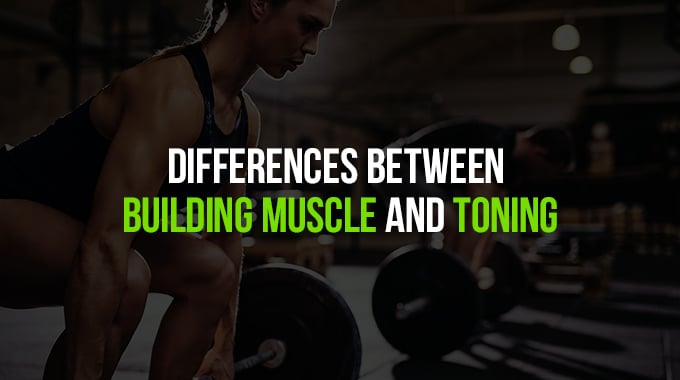
Credit: www.spookynooksports.com
Frequently Asked Questions
What Is Muscle Mass?
Muscle mass refers to the total weight of muscles in the body. It includes skeletal muscles, smooth muscles, and cardiac muscles. Building muscle mass involves weight training and protein-rich diet.
What Is Toning?
Toning refers to developing muscle definition without significantly increasing muscle size. It involves reducing body fat and performing high-repetition, low-weight exercises. Toning enhances muscle firmness and appearance.
How To Build Muscle Mass?
To build muscle mass, focus on strength training exercises. Use heavier weights and lower repetitions. Consuming a protein-rich diet also helps. Consistency and progressive overload are key.
How To Achieve Muscle Toning?
Achieving muscle toning involves a combination of strength training and cardio exercises. Use lighter weights with higher repetitions. Also, maintain a healthy diet to reduce body fat.
Conclusion
Understanding the difference between muscle mass and toning is crucial for achieving your fitness goals. Focus on building muscle for strength and toning for definition. Tailor your workouts and diet to match your specific objectives. This way, you’ll efficiently reach your desired physique and maintain a balanced, healthy lifestyle.

